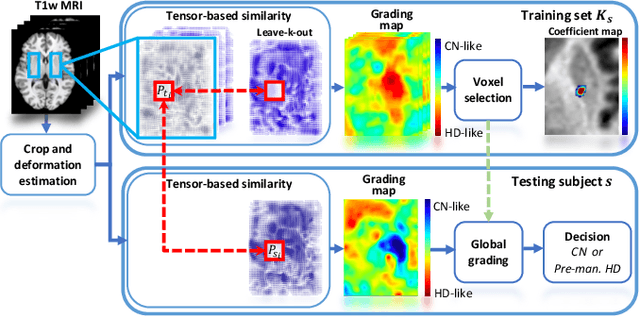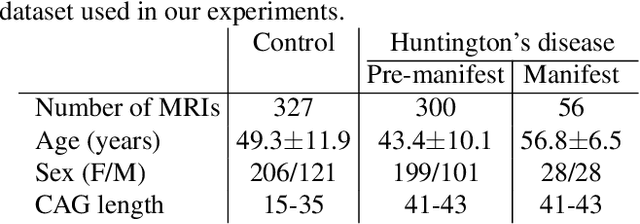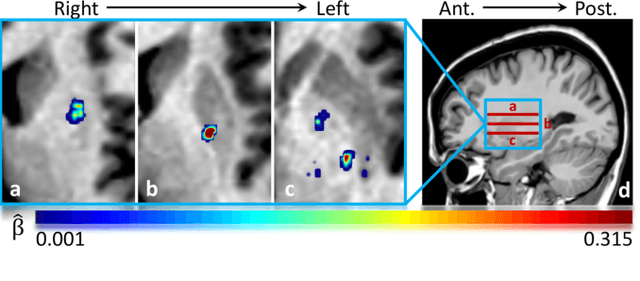Hans Johnson
LaBRI
Demonstrating the Potential of Adaptive LMS Filtering on FPGA-Based Qubit Control Platforms for Improved Qubit Readout in 2D and 3D Quantum Processing Units
Aug 01, 2024



Abstract:Advancements in quantum computing underscore the critical need for sophisticated qubit readout techniques to accurately discern quantum states. This abstract presents our research intended for optimizing readout pulse fidelity for 2D and 3D Quantum Processing Units (QPUs), the latter coupled with Superconducting Radio Frequency (SRF) cavities. Focusing specifically on the application of the Least Mean Squares (LMS) adaptive filtering algorithm, we explore its integration into the FPGA-based control systems to enhance the accuracy and efficiency of qubit state detection by improving Signal-to-Noise Ratio (SNR). Implementing the LMS algorithm on the Zynq UltraScale+ RFSoC Gen 3 devices (RFSoC 4x2 FPGA and ZCU216 FPGA) using the Quantum Instrumentation Control Kit (QICK) open-source platform, we aim to dynamically test and adjust the filtering parameters in real-time to characterize and adapt to the noise profile presented in quantum computing readout signals. Our preliminary results demonstrate the LMS filter's capability to maintain high readout accuracy while efficiently managing FPGA resources. These findings are expected to contribute to developing more reliable and scalable quantum computing architectures, highlighting the pivotal role of adaptive signal processing in quantum technology advancements.
Distributed Gesture Controlled Systems for Human-Machine Interface
Apr 12, 2023



Abstract:This paper presents the design flow of an IoT human machine touchless interface. The device uses embedded computing in conjunction with the Leap Motion Controller to provide an accurate and intuitive touchless interface. Its main function is to augment current touchscreen devices in public spaces through a combination of computer vision technology, event driven programming, and machine learning. Especially following the COVID 19 pandemic, this technology is important for hygiene and sanitation purposes for public devices such as airports, food, and ATM kiosks where hundreds or even thousands of people may touch these devices in a single day. A prototype of the touchless interface was designed with a Leap Motion Controller housed on a Windows PC exchanging information with a Raspberry Pi microcontroller via internet connection.
MONAI: An open-source framework for deep learning in healthcare
Nov 04, 2022



Abstract:Artificial Intelligence (AI) is having a tremendous impact across most areas of science. Applications of AI in healthcare have the potential to improve our ability to detect, diagnose, prognose, and intervene on human disease. For AI models to be used clinically, they need to be made safe, reproducible and robust, and the underlying software framework must be aware of the particularities (e.g. geometry, physiology, physics) of medical data being processed. This work introduces MONAI, a freely available, community-supported, and consortium-led PyTorch-based framework for deep learning in healthcare. MONAI extends PyTorch to support medical data, with a particular focus on imaging, and provide purpose-specific AI model architectures, transformations and utilities that streamline the development and deployment of medical AI models. MONAI follows best practices for software-development, providing an easy-to-use, robust, well-documented, and well-tested software framework. MONAI preserves the simple, additive, and compositional approach of its underlying PyTorch libraries. MONAI is being used by and receiving contributions from research, clinical and industrial teams from around the world, who are pursuing applications spanning nearly every aspect of healthcare.
Tensor-Based Grading: A Novel Patch-Based Grading Approach for the Analysis of Deformation Fields in Huntington's Disease
Jan 23, 2020



Abstract:The improvements in magnetic resonance imaging have led to the development of numerous techniques to better detect structural alterations caused by neurodegenerative diseases. Among these, the patch-based grading framework has been proposed to model local patterns of anatomical changes. This approach is attractive because of its low computational cost and its competitive performance. Other studies have proposed to analyze the deformations of brain structures using tensor-based morphometry, which is a highly interpretable approach. In this work, we propose to combine the advantages of these two approaches by extending the patch-based grading framework with a new tensor-based grading method that enables us to model patterns of local deformation using a log-Euclidean metric. We evaluate our new method in a study of the putamen for the classification of patients with pre-manifest Huntington's disease and healthy controls. Our experiments show a substantial increase in classification accuracy (87.5 $\pm$ 0.5 vs. 81.3 $\pm$ 0.6) compared to the existing patch-based grading methods, and a good complement to putamen volume, which is a primary imaging-based marker for the study of Huntington's disease.
 Add to Chrome
Add to Chrome Add to Firefox
Add to Firefox Add to Edge
Add to Edge